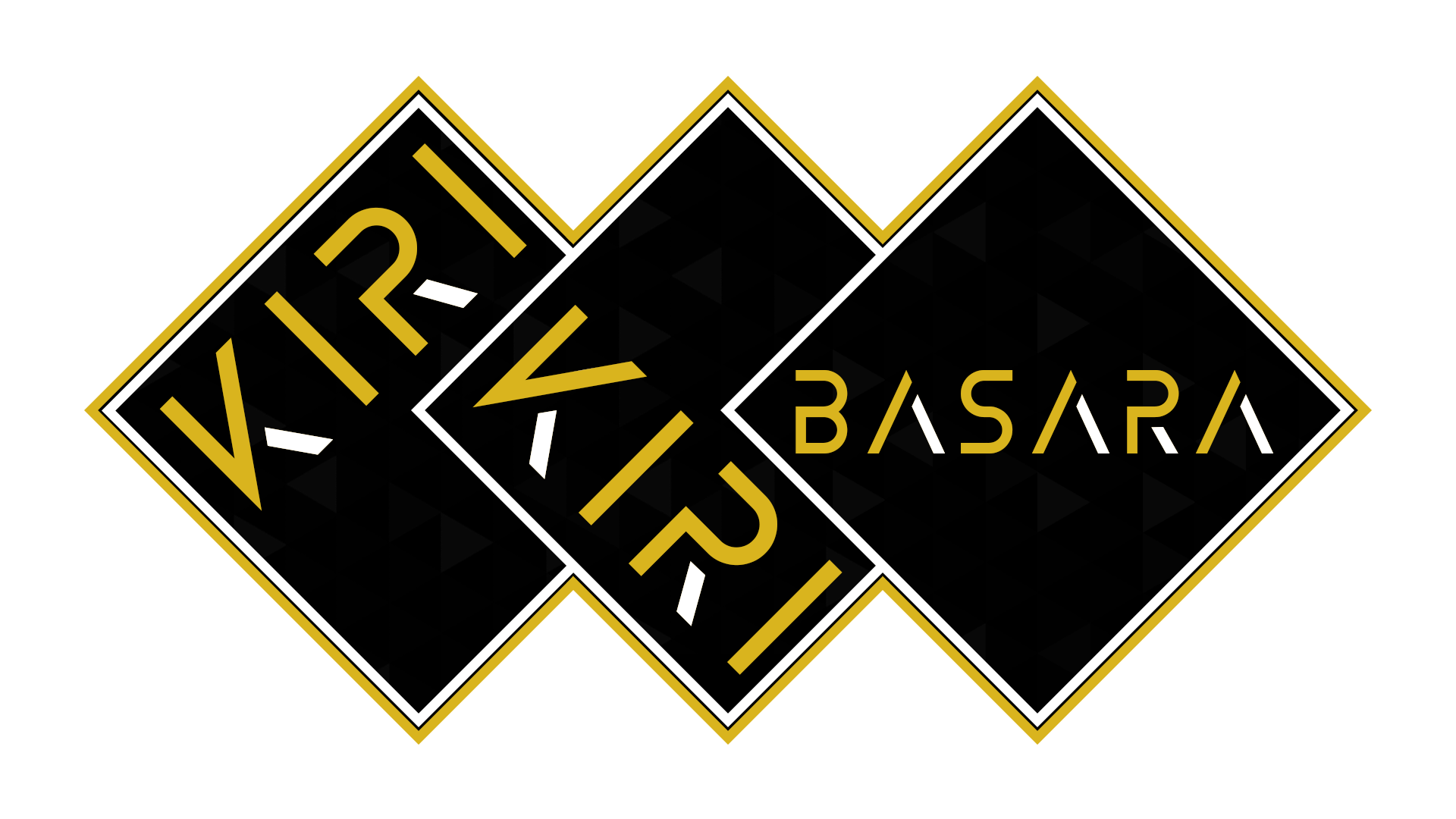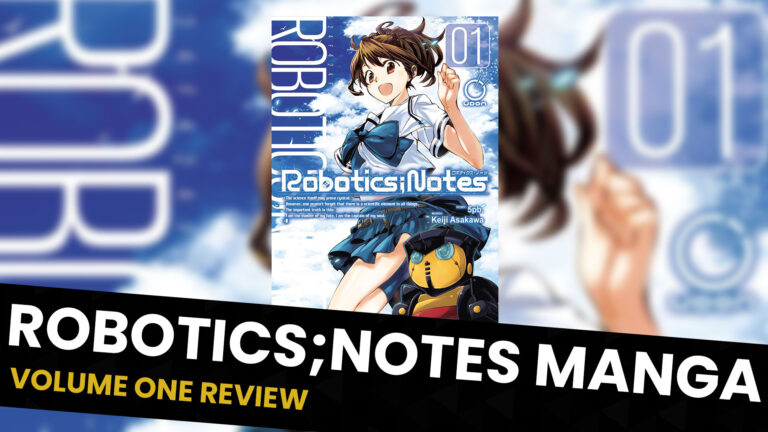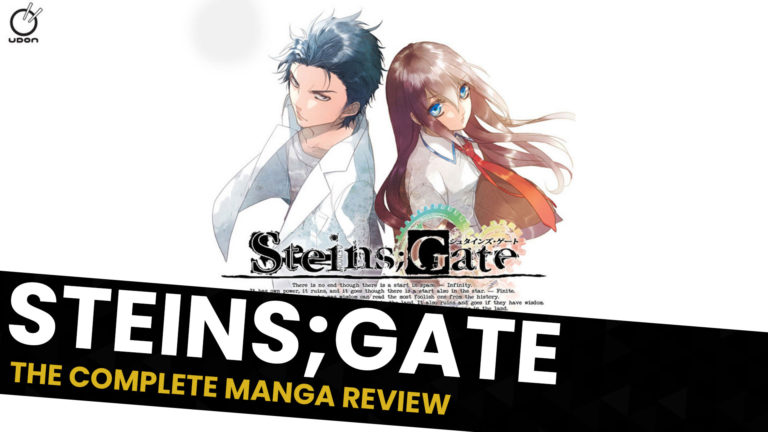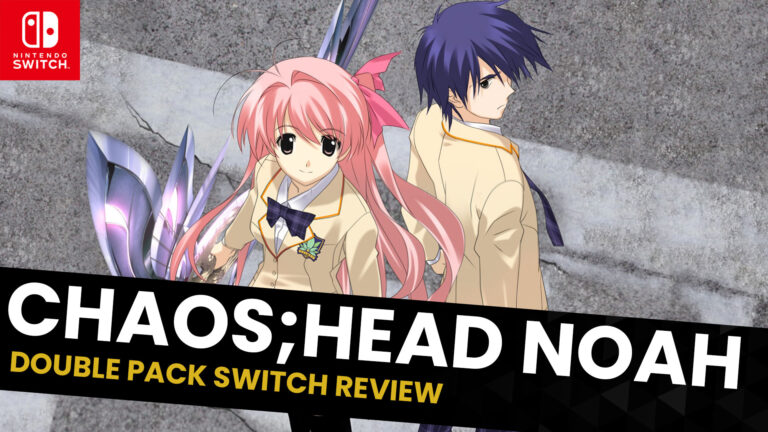The newest entry in MAGES.’ hot-blooded, fisticuffs-inducing fighting game series is finally here!
Well, technically there isn’t a lot of fisticuffs in it. I mean, most of the characters use weapons… Also, does it count as fist-fighting if you fight with a giant, floating robot hand? Wait, on that note, do the Future Gadgets even count as weapons?
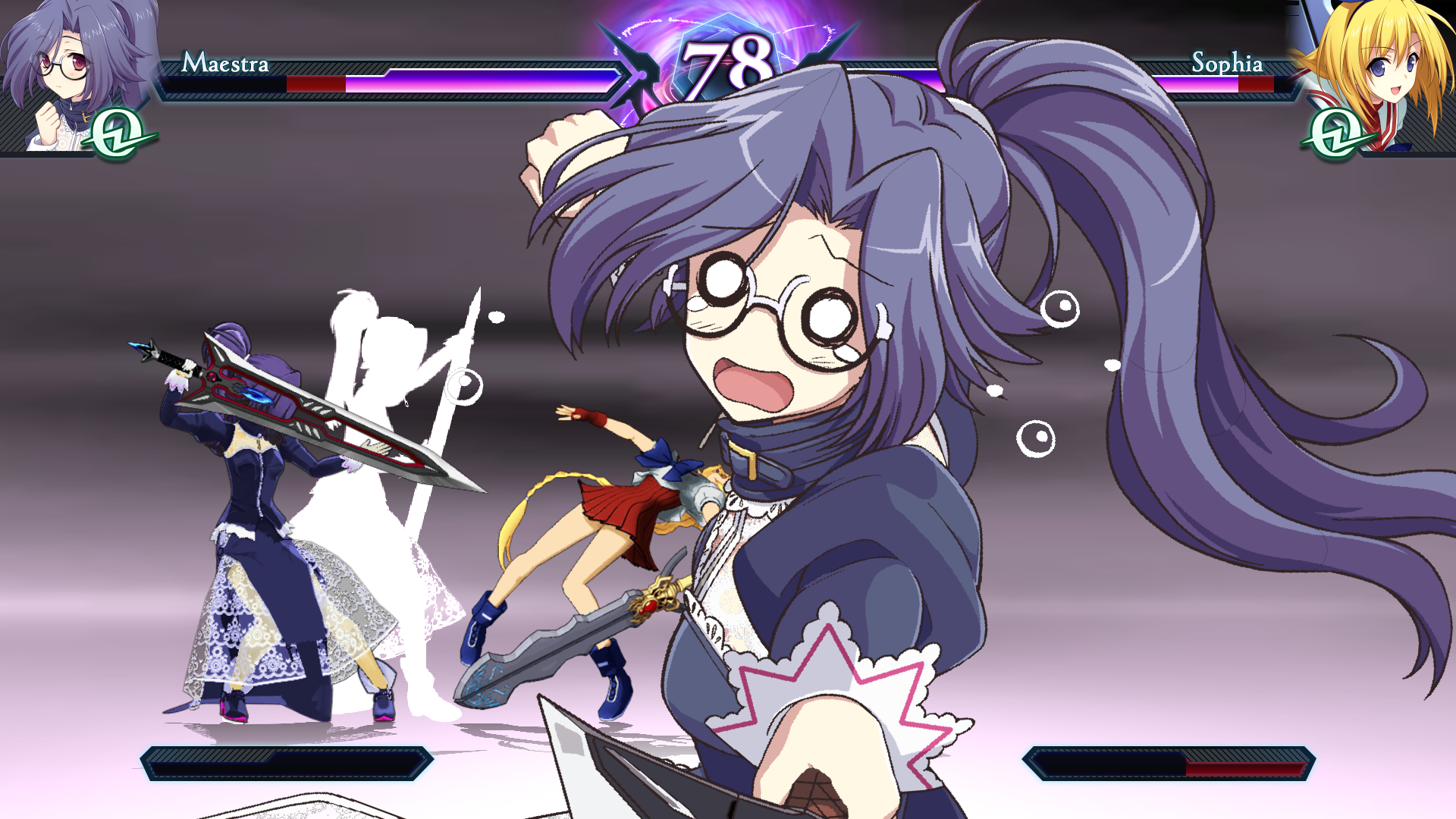
All right, I digress. Phantom Breaker: Omnia, the reboot the series sorely needed, is here, and if you read my last article on the game, you know how excited I was about this one. I mean, even setting aside the low-hanging fruit that is Kurisu and Rimi as playable fighters, there’s a ton of exciting stuff to dig into here: a shiny new world and plotline to explore, a colorful troupe of characters to get to know, an all-star cast of English and Japanese voices to enjoy, and most important of all, a unique new fighting game to sink your teeth into.
Let me get this out of the way now: just as I mentioned last article, I’m a complete fighting-game newbie. Omnia may actually be the first fighting game I’ve spent a significant amount of time with. Thus, while this review will discuss the fighting gameplay, please keep in mind that I will go nowhere near in depth about it as other outlets might.
There’s definitely more to this game that’ll catch your eye than its battling—its storytelling, localization, and presentation, to name a few. I will be giving these other aspects a bit more time in the spotlight than you might expect, but I hope you’ll bear with me all the same; Phantom Breaker: Omnia very much is a release that aims to emphasize all of its cogs, and it’s my hope to make sure even those lesser-considered aspects are discussed, too.
Okay, that’s enough disclaiming. Let’s get phantom-breaking!
A special thanks to the folks at Rocket Panda Games for providing a Steam copy to us for review purposes; this has not affected our evaluation of the game in any way.
[Worlds brimming with potential]
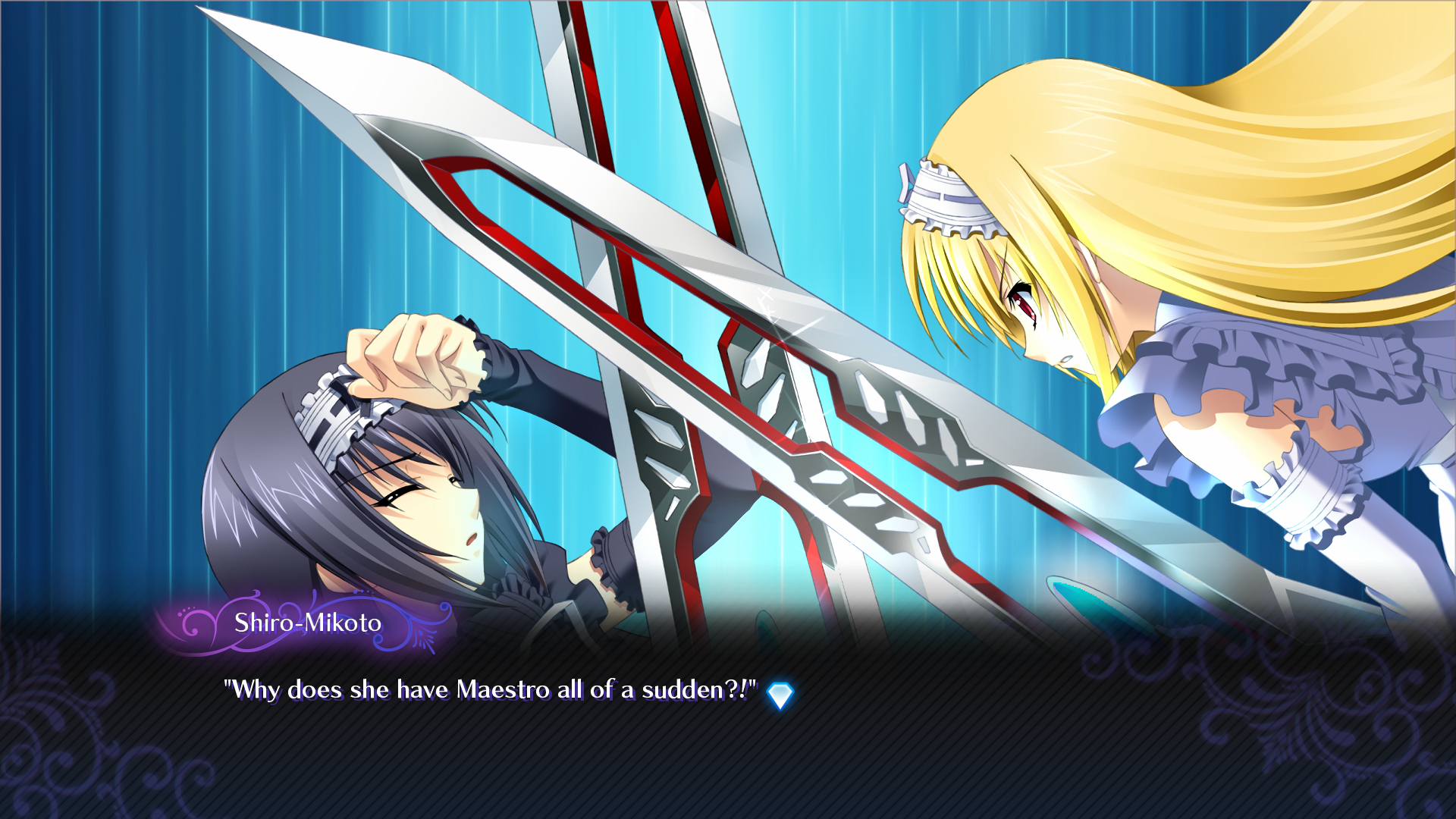
Going into Omnia’s story mode, I was really excited to find out what the world outside of Japan had been missing out on all these years; if you weren’t aware, the game’s a reboot of the first two mainline Phantom Breaker entries, and this marks the first time those stories have been localized for the West.
The common thread between Omnia and, well, this website, is MAGES.—MAGES. develops the Science Adventure series, which we tend to focus on here; as mentioned above, MAGES. also developed the content on which Omnia was based. Although the company’s certainly made a couple of missteps in recent years, I think it’s safe to say that they’re among the kings of compelling tales told in a unique format. Phantom Breaker, I imagined, wouldn’t be an exception to that—and certainly, Omnia’s story mode goes all-in right from the beginning. Not five minutes into the first route, there’s an alternate-reality version of the protagonist in the picture, and they’re out for your blood. Those are the kinds of shenanigans you can expect to run into throughout the story mode.
Omnia is brimming with potential, and I don’t just mean its fantastical plotline, either. Because sure, you’ve got a nefarious, world-hopping phantom, a battle royale among cute girls and hot guys who want to have their wishes granted, and a bevy of vastly unique backstories to explore. But you’ve also got down-to-earth, really human conundrums tucked into the plot that can make it feel genuine, even amid all the craziness. Is fighting to save someone close to you truly the right way forward, if you have to hurt others to do it? Can justice really be dispensed unconditionally? How do we reconcile our love for those who have done serious harm to others?
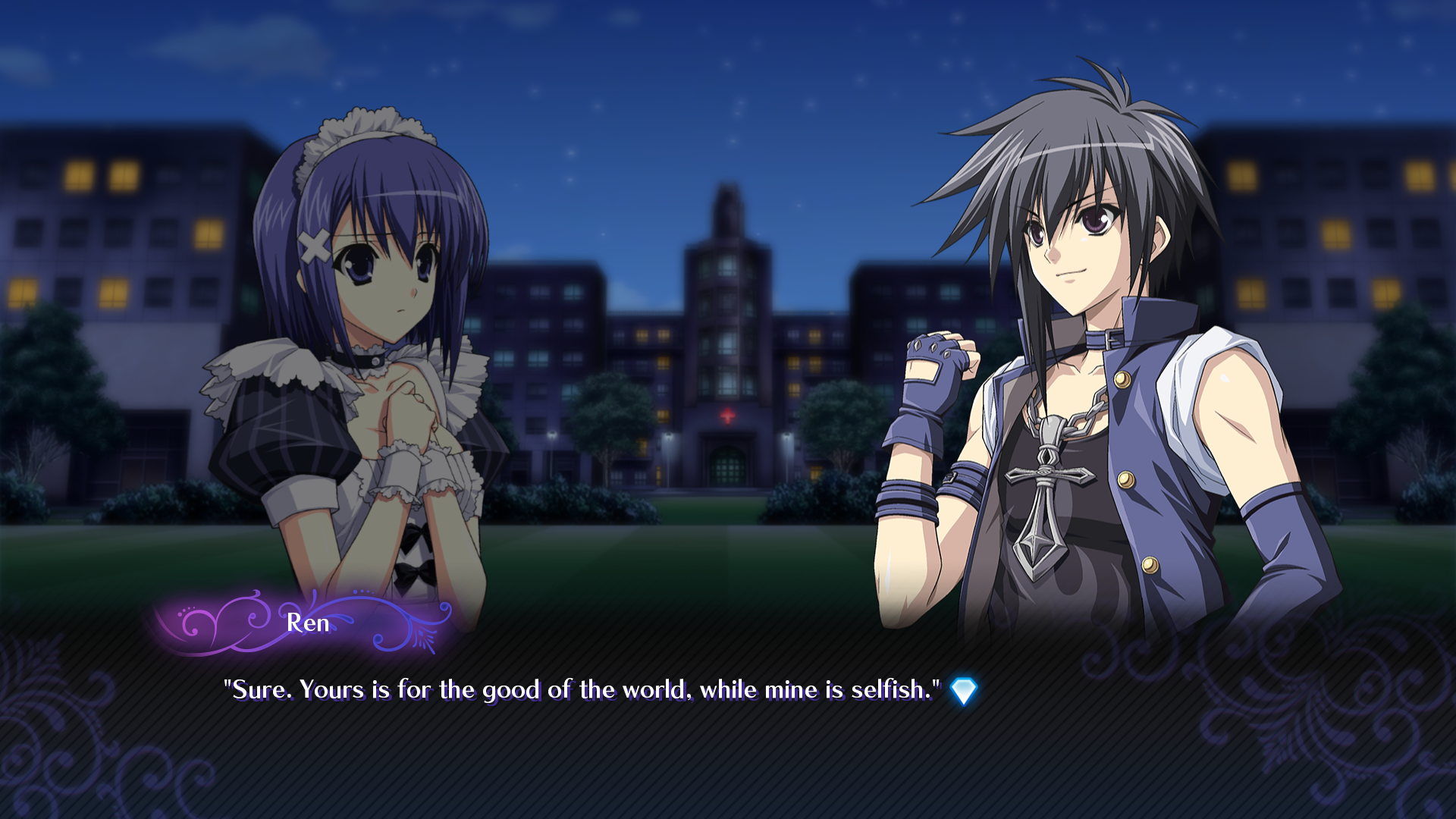
But unfortunately, for all the potential it had, I felt pretty often while playing Omnia’s story mode that Phantom Breaker had fallen into the trap of trying to be a fighting game with a minimized story, as opposed to a story-focused fighter. Though Omnia often tries to go somewhere with its different characters, their differing perspectives, and their unique motivations, the cutscenes often are too short and detail-starved to provide satisfactory depth. There are some scene transitions; there sometimes is post-battle dialogue between the winner and the loser; there always is a general plot thread throughout the routes. But even so, none of these aspects of the story mode are meaty enough to offer a satisfying narrative.
I do understand why this is the case, of course; Phantom Breaker isn’t a visual novel series. It’s got to focus on putting the player through fights often enough that their fingers don’t start itching for an overdue rumble. I just think it’s a shame that, despite how much potential these characters and their worlds have, Omnia can never quite do enough justice to them.
If I were to compare the issue to a swimming pool, it’s like the character routes start out in the shallow end, begin wading toward the deep end, but abruptly turn around halfway there, just to head back for a crummy cliffhanger that’ll never be resolved.
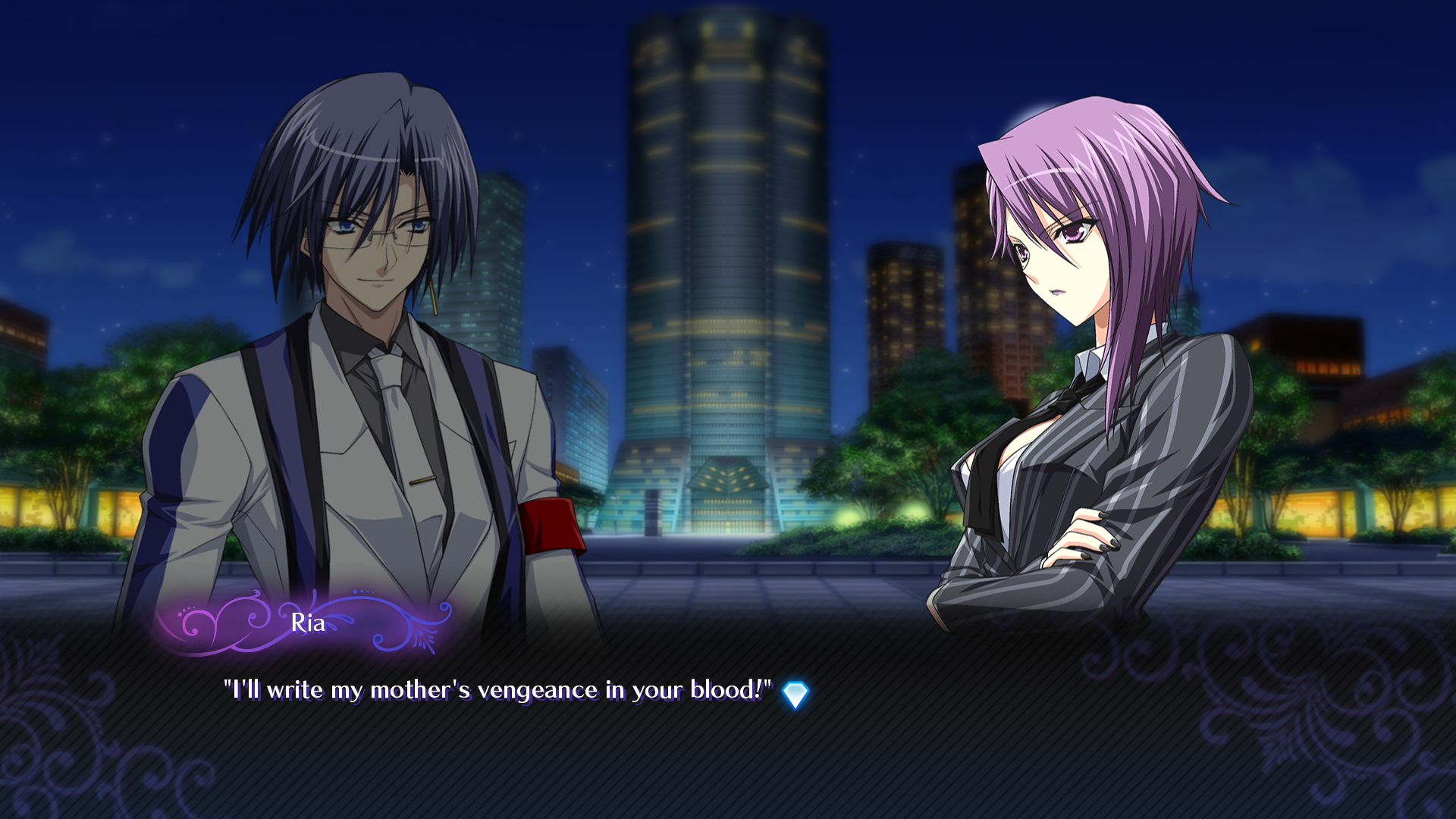
I don’t think Phantom Breaker’s narrative is entirely busted. I do think that, at points, it manages to get across some cool ideas and story turns in spite of its limited nature. And though they couldn’t incorporate it into the game, Rocket Panda Games was recently able to produce an new manga continuation to the story, one that’ll presumably links the end of Omnia to the beginning of whatever’s coming next. It certainly has some interesting implications, to say the least.
I do feel an effort is being made to keep things connected and moving along—an effort to craft a continuing series narrative. The issue is, there isn’t enough commitment to that narrative. I’m just hoping that future Phantom Breaker games will put more stock into that end of the equation.
[The words are important]
I’m happy to say that, despite a few oddities, Phantom Breaker: Omnia’s English localization is charmingly impressive—if you ask me, it may well be the best part of the game, actually.
I found myself consistently impressed by how well character dialogue flowed in just about every story scene. Every Phantom Breaker character has a quirk or two—broody, but fair and honest CEO, goofy, castle-obsessed ninja, calm and composed shrine maiden, et cetera—and the localization team did wonders to convey these characters’ personalities in every minute writing choice. Although Omnia’s world can feel paper-thin at times, the stellar localization writing is always on top of its game, meaning it’s a pleasure to read through the story no matter what’s going down.
It most definitely helps that the English voice actors did a phenomenal job of amplifying said localization writing. I’ve mentioned this before, but English dubs of MAGES. games are rare—and I’m so glad that the potential this dub had wasn’t squandered. Line delivery is usually, if not almost always, very strong: funny scenes are chuckle-inducing, sad scenes are gloomy, and tense scenes are attention-absorbing, all thanks to the talented team behind this standout dub.
I especially want to call attention to Yuzuha’s and Fin’s routes; while they can be disappointingly half-baked in terms of plot revelations, that didn’t change the fact that they’re often funny as hell.
Phantom Breaker: Omnia’s localization is, on the whole, extremely impressive. That said, I did run into a few quirks that I can’t say I was a fan of. The biggest stand-out was, well…
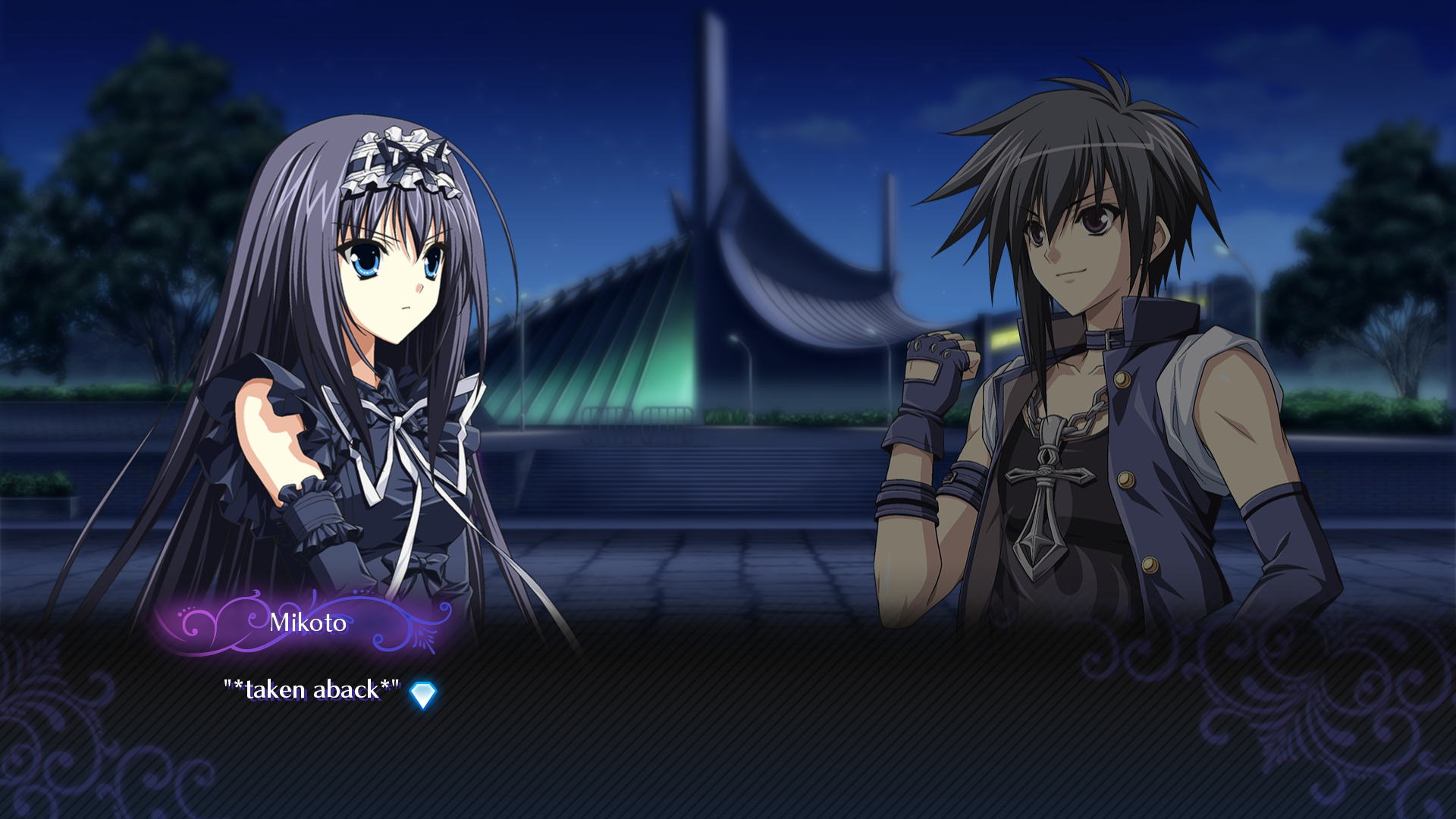

I get the impression that the decision to have certain sound effects and… other things represented between asterisks and parenthesis was intentional. And I don’t mean to claim that that kind of writing is a bad idea in every scenario, but in Omnia, they often felt overused. I’m talking, like, a relatively grim death scene using the phrase “*death rattle*” level of overused.
In a story that’s meant to be lighter and more comical, I can get the reasoning behind it: the story’s not meant to be taken super seriously, and therefore is somewhat self-aware in how it uses asterisk-actions—Puyo Puyo Tetris’s localization is a good example of this. But Phantom Breaker usually isn’t meant to be super joke-y, so here the asterisk-overuse comes off as extremely out of place in an otherwise stellar localization. It can really ruin the mood sometimes.
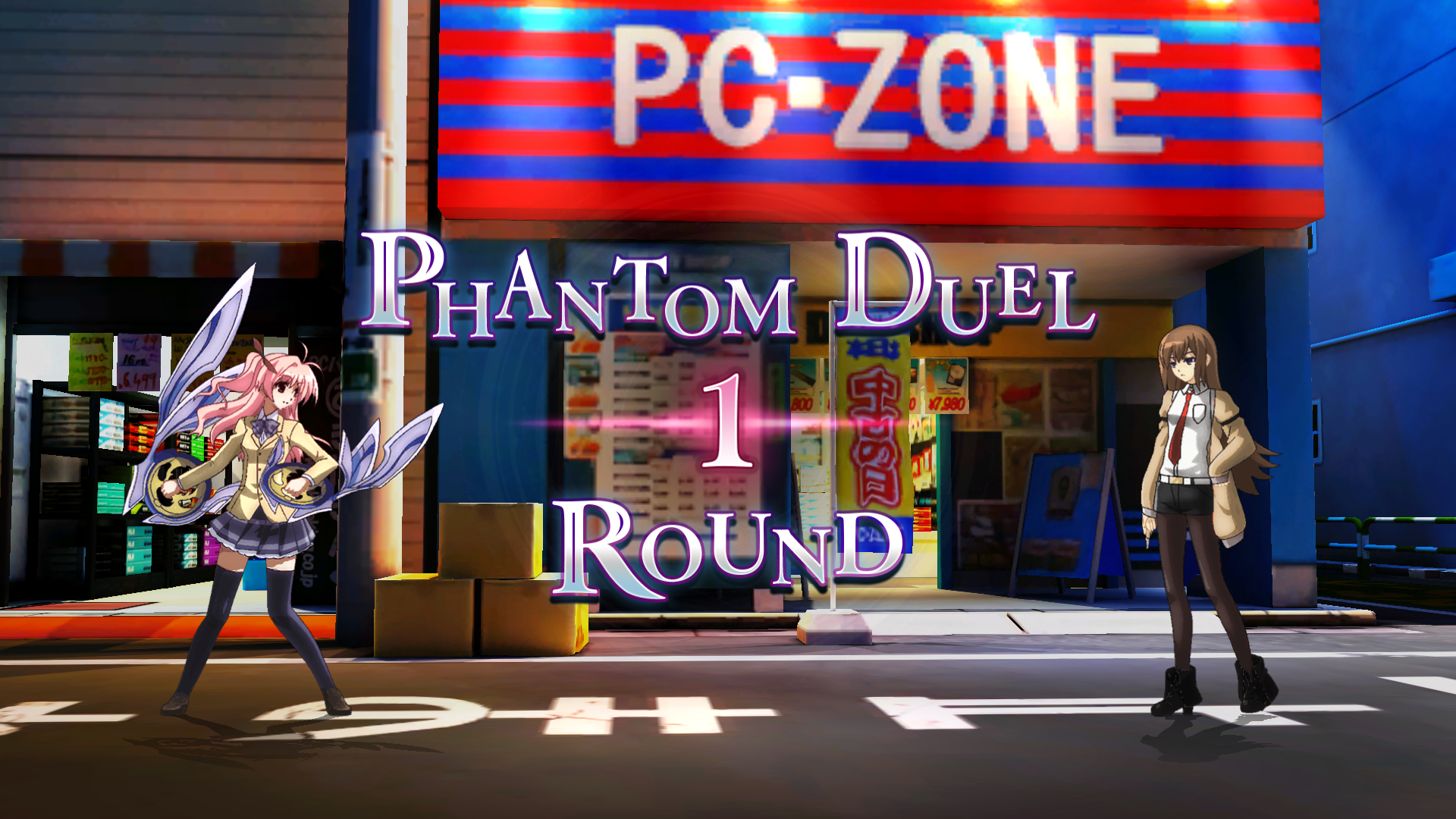
Now, this is a SciADV site, so I figure I should mention a related mistranslation I noticed while playing.
When Rimi beats Kurisu in a match, her win quote in the English translation is, “I bet you and Taku would geek out over science stuff together—not that I’m jealous…!” This line threw me off a bit, because while we know from Chaos;Head that Takumi is pretty smart, he never struck me as the type to get super invested in things related to science.
The Japanese win quote, meanwhile, is “タクと同じ言葉を使うんだね。ちょっと、うらやましいな……” which you could translate more literally as, “Your vocabulary is just like Taku’s. I’m a little jealous [of that]…”
I appreciate the effort that was made to give more life to the English line here, but it seems like there was a misunderstanding about what kind of vocabulary Kurisu and Takumi share. I feel Rimi’s more likely talking about how both tend to use @channel/net lingo in their conversations, intentionally or not. It doesn’t really help that some instances of Kurisu actually using that lingo in matches (round- and match-win quotes) are either replaced with something else or ignored in the dub.
The “not that I’m jealous…!” part makes some sense to me, at least—the line was probably meant to be delivered as though Rimi were quickly trying (and failing) to reassure the listener that she isn’t jealous, even though she is. In practice, though, the delivery of the English-dubbed line doesn’t really come off that way.
I’d wager there just wasn’t enough background information provided to the translator in this situation, and they tried to make an educated guess that didn’t pan out. It’s an unfortunate mistake for sure, but it’s definitely nitpicky. Everything else about Omnia’s translation is generally so solidly put together, I can’t really say this bothers me too much.
[Fight on, you who wish!]
Okay, okay, I’ll stop talking about words now.
Much of what I had to say in the last article hasn’t changed—as a beginner at fighting games, Omnia is fast, satisfying, and depending on the CPU difficulty, pretty challenging. On harder difficulties, you will be punished if you overextend or fail to land a combo quite right. Maybe it’s just my imagination, but I did tend to notice that CPUs low on health would begin to play more aggressively in an attempt to turn things around, which kept me on my toes; if I didn’t focus, I would lose.
What keeps matches quick and action-packed are the special moves each character possesses: three from my count, which also can be powered up at the cost of meter. Should you save up that meter instead, you can unleash an ultimate attack called a Phantom Break for devastating damage. These moves certainly mix things up, especially when you have a long-range special attack on a character that normally focuses on short-range combat; you’re not entirely out of luck if you’re out of your element, basically.
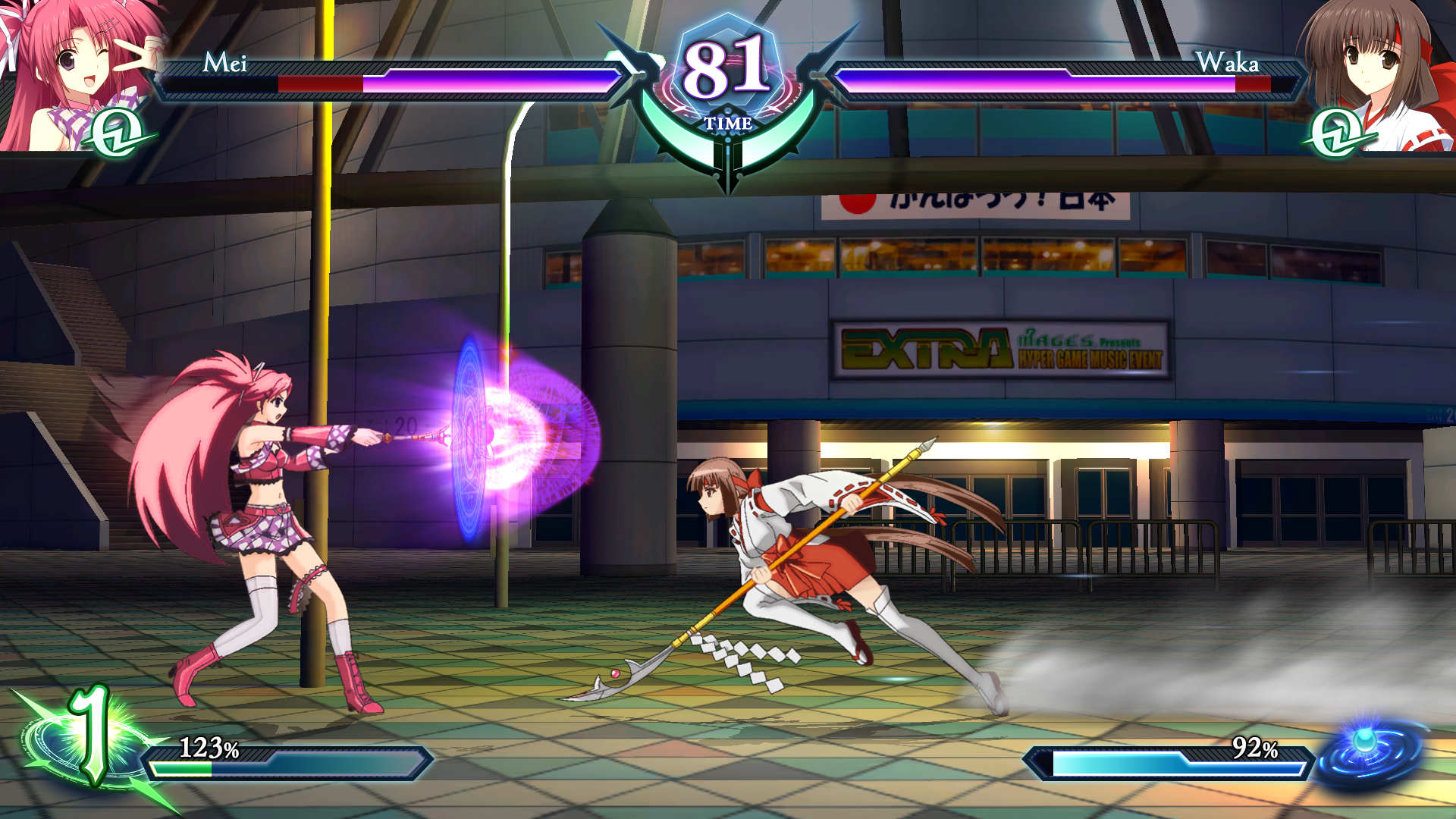
There are a number of other interesting mechanics to Omnia, as well: in Quick mode, instead of guarding, you can choose to press the forward directional button at just the right moment to “slip shift” through an attack entirely, and not take damage; in Hard mode, doing the same will largely absorb the attack and allow you to counterattack immediately. You’ve also got clashes, which occur when characters attack or dash into each other at the same time—these not only look and sound cool, they also build up your meter very quickly.
You can opt to consume all your meter to temporarily slow down time for your opponent and unleash a faster chain of combos, but this isn’t as overpowered as it seems. Far from it, because if you don’t time your moves carefully, your opponent will still easily be able to counter you—a far cry from how one-sidedly overpowered the move was in Phantom Breaker: Extra. Overall, there’s a lot going on here to keep your matches interesting.
…Well, I wish I could say all this applied to the entire game, but… for some odd reason, I found the entire story mode campaign to be ridiculously easy for some reason. CPUs would send an attack or two my way, then run backward, then stand still, essentially. Rarely would they try to throw whole combos out, and I’d often shred through their health bars in a matter of seconds. This made it really hard to enjoy the battles in story mode, as you can probably imagine. At some point, my only motivation was finding out what would happen next story-wise; battles just felt like an interruption.
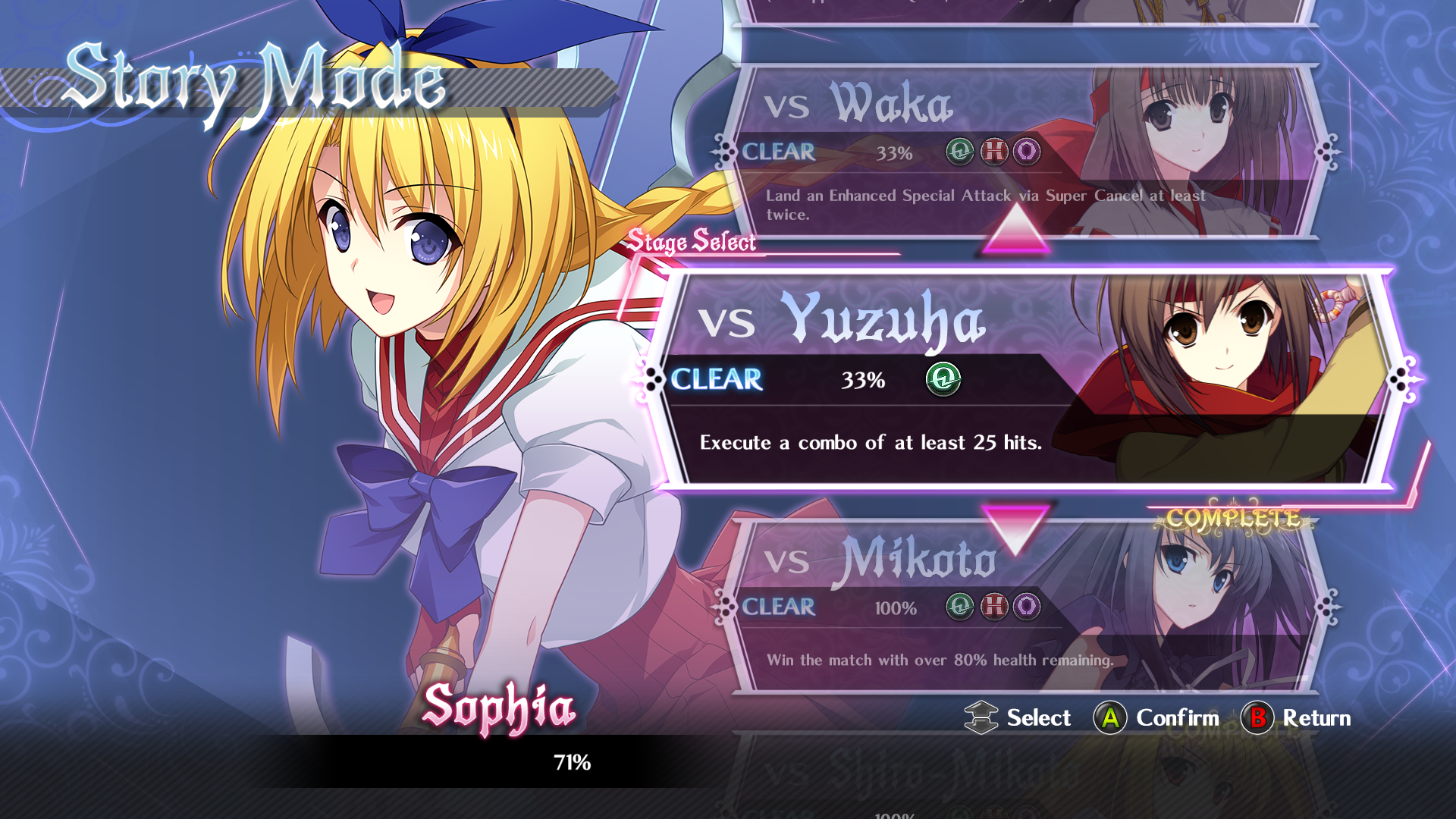
Even getting through the story mode became a chore when I got down to the last four routes in the game, and I suddenly needed to fulfill certain battle conditions to proceed—e.g. land a certain number of hits in a row, pull off multiple slip shifts. It was far too difficult to fulfill these conditions in some cases, and for all the wrong reasons; if you’ve not mastered slip shifts but need to pull off three to advance, how are you going to do that when the CPU barely attacks you to begin with?
As far as I can see, there isn’t any kind of difficulty option for story mode, which is a huge shame given that the story mode’s one of the game’s biggest draws. Playing against CPUs in regular versus is fun, and I imagine playing against human opponents is even more exciting. But as it stands, story mode is extremely momentum-killing for the oddest gameplay reasons. I can only hope that its difficulty being too easy is some kind of mistake on my part, or some weird issue that’ll be patched in the future.
[Looks count, too]
Visually speaking, Phantom Breaker: Omnia can absolutely be stunning. The menus are sleek. The character select screen is brimming with bright colors and appealing character designs. The in-game character sprites and models—as well as their animations—look as though they were crafted with love and care. Really, there’s a lot of eye-candy here to be appreciated, and I feel that the artists and designers involved did a great job with what they were provided.
The problem is that, well, not much in the visual department was done from scratch, or “remade,” per se. As a reboot of the first two, roughly-decade-year-old Phantom Breaker games, I think you’d come to expect Omnia to have redone and improved upon a lot of what was first presented in 2011 and 2013, but… no, there’s a huge amount of asset reuse here.

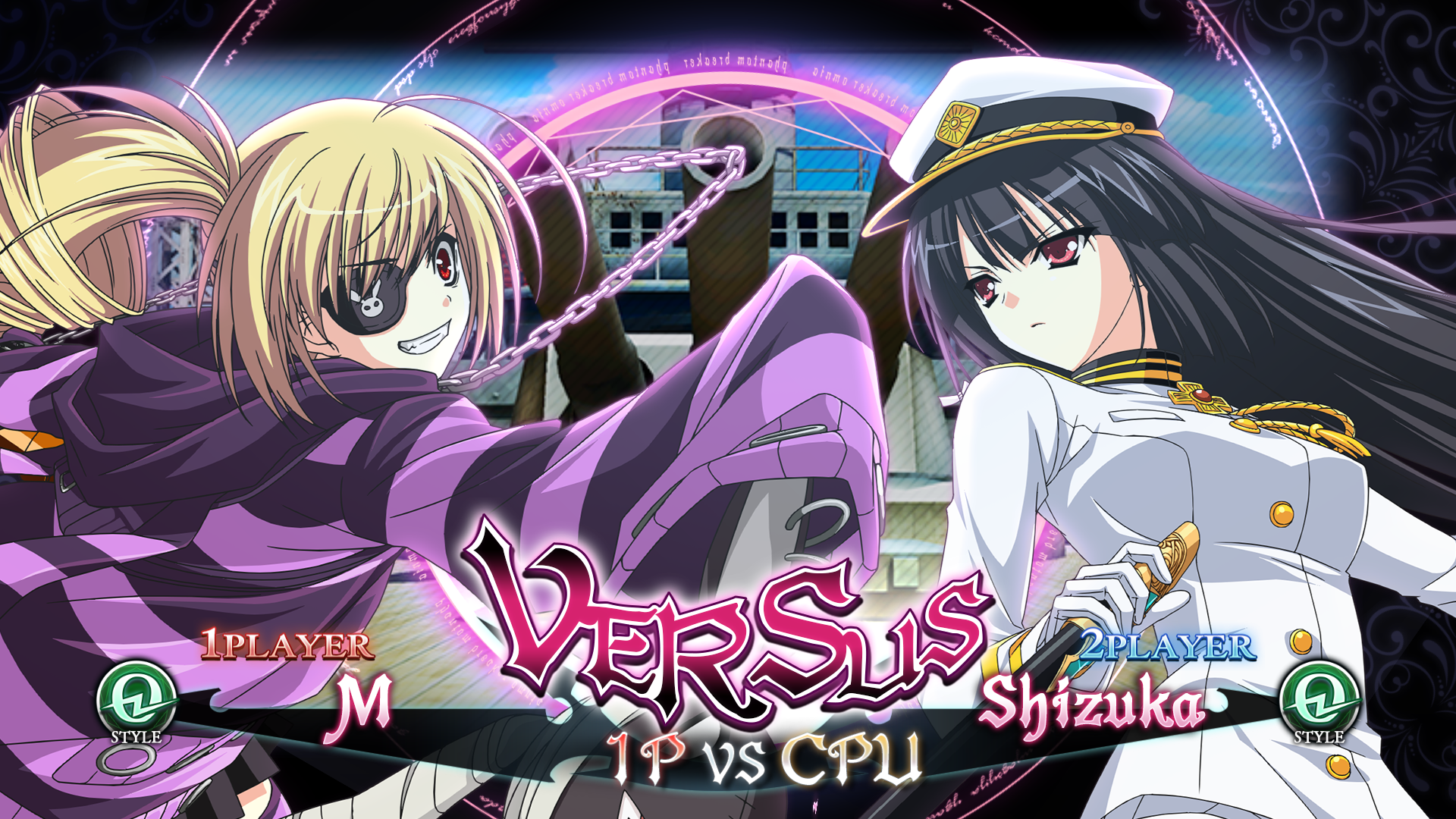
I’m hoping you can see what I’m getting at from the images above. On the left, you have a character that was present in the original Phantom Breaker, and was designed as a 2D sprite. On the right, you have a character that was brand new to Phantom Breaker: Extra, and was designed as a 3D model. Above and all around them are character artwork and UI design work newly created for Omnia. And finally, you have character cut-in artwork in the right screenshot from Phantom Breaker: Extra, which itself clashes with the fresher look of the art in the left screenshot. It can be very jarring to see this happen—it almost feels as though you’re playing three different games at the same time.
On the surface, Omnia’s ambitions are high in terms of presentation. I mean, we got cool new animated content, a brand-new illustrated manga, and loads in the way of sleek marketing. But nonetheless, a lot of what you get in Omnia itself is a mixed bag of years-old graphical content. And I’m not saying that content looks bad; far from it, I think each artstyle used in the game has its own charm. I like the look of a lot of the game’s assets. But seeing these various styles placed side by side, as though they’re meant to be taken as one… well, it just doesn’t work. It doesn’t look all that great.
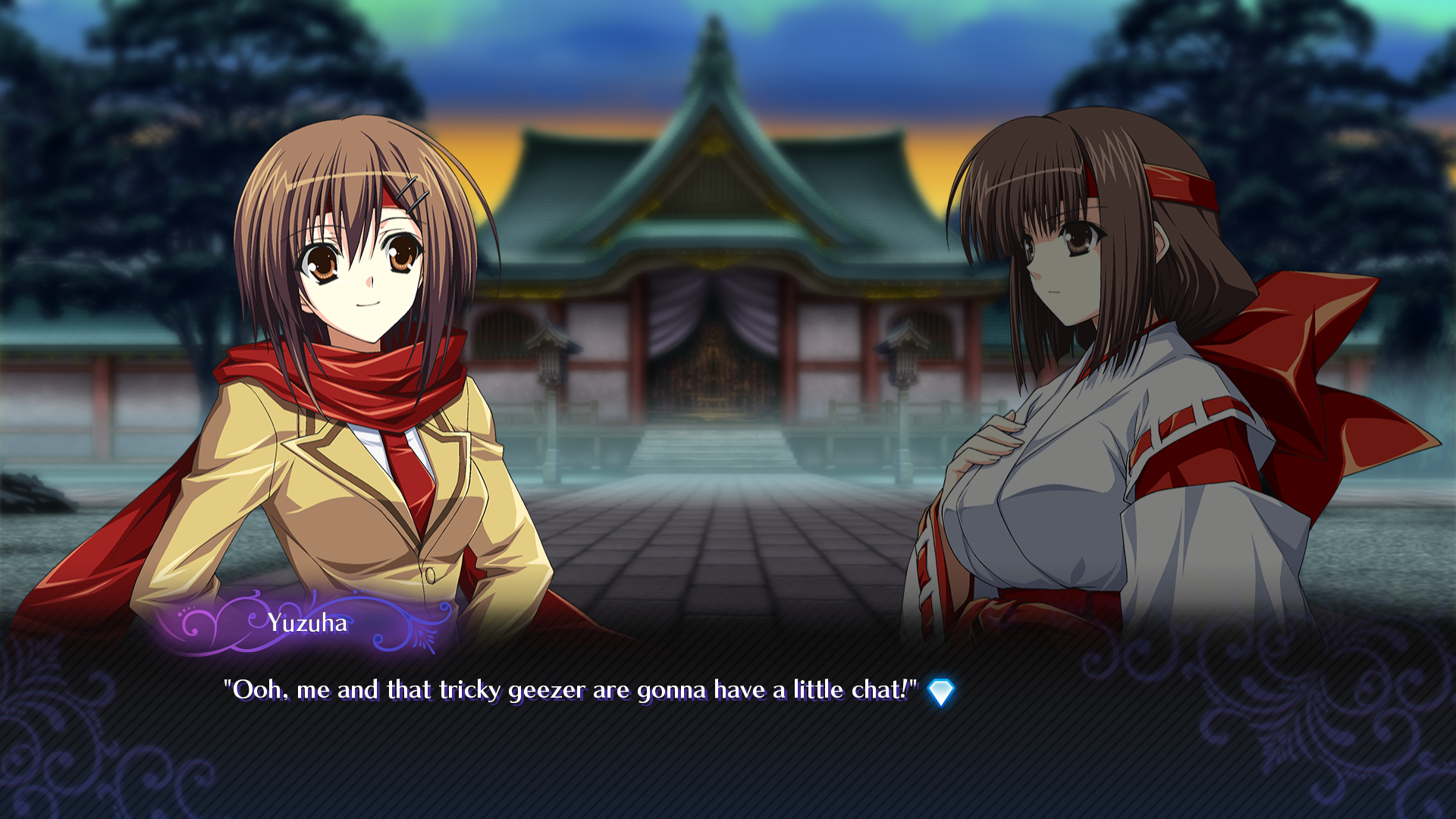
The story mode, for what it’s worth, always looks consistently smooth. You’ve got clean character sprites, interesting backgrounds, and occasionally, an event CG for crucial scenes that require more expression. But sadly, even much of this seems to be reused from Phantom Breaker: Extra, which itself was limited in how much it could visually represent.
Although characters have sprites, they only ever have one neutral sprite. There is no variation in their poses or their expressions. This means a character whose neutral sprite has them smiling might be smiling even as they’re, I dunno, in massive amounts of pain. There’s one scene where a character is essentially being abducted, and guess what? They’re smiling, because that’s their neutral sprite.
If there’s one thing I wish this release could have added, it would be more sprites, more variation. MAGES.’ visual novels rarely struggle with this issue, which really makes it a shame to see such a basic failing here (carried over from Extra, which they developed) just because we’re no longer in visual novel territory.
It isn’t my intent to tear into Omnia’s visual artstyle as though it’s some kind of Frankenstein’s monster—for the most part, the artstyle clash is inoffensive, something you don’t notice unless you pay close attention to it. Nonetheless, I feel it is a fair point to bring all this up, as the concept itself stands out as an issue to me; these artstyle-clash issues, particularly with the sprites and models, were present as early as Phantom Breaker: Extra almost ten years ago. I find it a little ridiculous that these issues were made worse, not resolved, almost a decade later.
[The door’s open]
I’ll be the first to admit that I’ve torn into a lot of Omnia in this review. Unfortunately, there undeniably are a decent chunk of issues to criticize with this release.
And at the same time, I can’t help but love what I loved about Omnia all the same. It’s a weird mixed bag of issues and cool stuff, and you can’t quite acknowledge one side without the other. Omnia is, as it stands, far from greatness; and yet, the part of me that was burning with excitement for the game last month is still alive, still urging me to pick the controller back up and get brawling again.
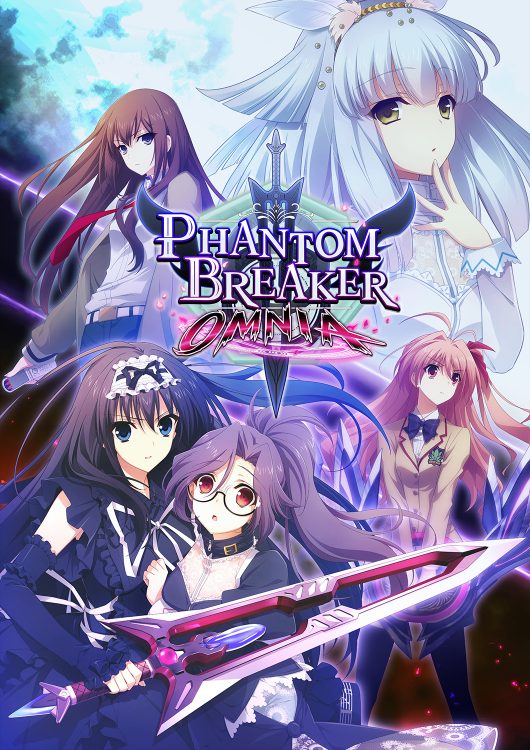
And so, as I close out this review, let me leave you with one final verdict: Phantom Breaker: Omnia may be brimming with peaks and valleys alike, but I do feel that it’s those highs that ultimately win out. If the story mode interests you, or you’ve got friends to play it with, give the game a try: I think you’ll find it worth your while.
See you guys online. Please don’t spam Rimi’s 4SP against me 🙁
7/10
Phantom Breaker: Omnia is a fun time, in spite of its ups and downs. Its story, although disappointingly shallow at times, is engaging nonetheless thanks to the game’s stellar localization. Further, the fighting gameplay is fast and fun, with loads of variety mixed into the equation. Whether you’re more of a reader or more of a fighter, Phantom Breaker: Omnia has a little something to engage everyone.
Phantom Breaker: Omnia is available now on Steam, PlayStation 4, Nintendo Switch, and Xbox One. Both regular and collector’s physical editions are available for preorder now via Limited Run Games.
